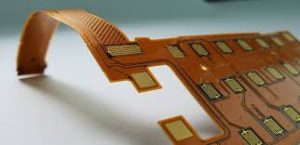Durability of Flexible PCBs
Compared to traditional rigid PCBs, flexible circuits are lighter, more compact, and able to conform to a variety of shapes and spaces. In addition, they can be plated with metal to improve their durability. Nevertheless, when it comes to durability, there are several factors that influence the reliability and longevity of flexible circuits.
Proper component placement is key to ensuring that the durable operation of a flexible circuit. This includes minimizing stress concentrations by positioning components away from areas of the circuit that may be subject to repeated flexing and ensuring sufficient space between each component to prevent contact damage. In addition, it is essential to choose the right materials for the job, as a durable circuit must be able to withstand temperature extremes and chemical exposure.
A flexible circuit substrate and coverlay material also play a significant role in its durability. Polyimide is the most common dielectric and insulator used in flex PCBs, but polyester is also available for more harsh applications. The choice of a surface finish is also critical, as it serves two functions: to protect the copper conductor from corrosion and to make the board solderable. Electroless Nickel Immersion Gold (ENIG) is a popular option for most flex circuits because it is easy to process and offers excellent durability.

Factors That Affect the Durability of Flexible PCBs
The thickness of a flex circuit is another important factor that impacts its flexibility. Thicker flex circuits are more rigid, while thinner ones are more flexible. For the most flexibility, a flex circuit should be as thin as possible while still maintaining a high degree of mechanical integrity.
Another key factor that influences a flex circuit’s durability is the type of metal used for plating. Various metals are available, each with its own set of benefits and drawbacks. For example, gold is highly conductive and resistant to corrosion, but it is also stiff and expensive. Copper, on the other hand, is an ideal balance between conductivity and flexibility.
In addition, the etching process that is used to create a flex circuit also contributes to its durability. A deep etch reduces the thickness of the copper, making it less likely to fracture during flexing. The depth of the etch can be controlled to achieve the desired level of thickness and flexibility.
The final factor that determines the durability of a flex circuit is its design. In addition to ensuring that the bend radius is appropriate for the intended application, it is vital to consider the location of reference plane layers and shielding. The distance between signal traces should also be considered to ensure proper impedance control and signal integrity. In addition, it is advisable to use a stiffener to provide additional rigidity in the area of the connector and other high-wear areas.



